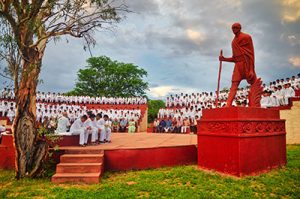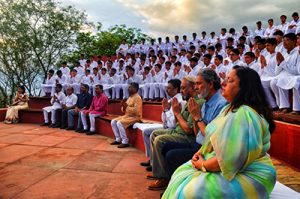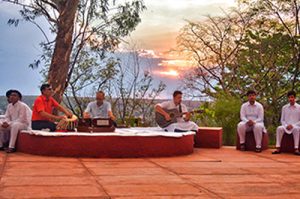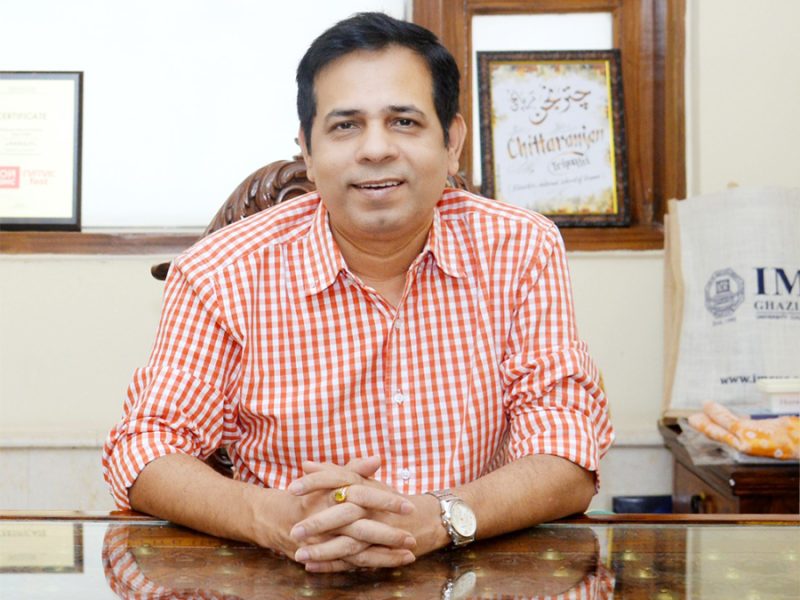The Scindia School, Gwalior is an all-boys’ boarding school located atop the 300 feet high hill in Gwalior city. This October, the school is celebrating its 125th anniversary and PM Shri Narendra Modi is the Chief Guest for the special Founder’s Day celebration to be held on 21st/22nd October where he will release the Scindia School stamp. Namrata Kohli speaks to Ajay Singh – School Principal – The Scindia School Gwalior
Congratulations on clocking 125 years. What are you displaying in the 125th year celebration?
We are displaying the pride of our school- the Scindia band. Every year our boys play on Kartavya Path during Republic Day celebrations. The band is a beautiful combination of skill, harmony, teamwork, collaboration by 45 children, music- everything coming together. Also in the 125th year, we are showcasing Astachal, our spiritual practice and we are showing the transformation the Indian way. The whole world is now talking of mental strength but somewhere the inner strength is missing. Astachal is our real legacy. We are also showcasing our emphasis on nature through our Biosphere project, energy and waste management and being in harmony with nature.
On its 125-year celebration, The Scindia School, has also penned a celebratory song that brings alive the spirit of the school and all that it stands for. The Founder’s Day event will witness the debut performance of the newly coined celebratory song, as the school’s extremely prestigious Brass Band matches every note and tune to perfection.
Your institution has had an illustrious journey in the last over a century. What, according to you has been the school’s cutting edge or USP?
Achieving a milestone of a 125 years as a beacon of education in India, is no small feat. We have evolved over the years to imbibe the best and latest in global education while staying rooted and grounded in our values. Mindfulness and sustainability that have only recently emerged as buzzwords along global education corridors have always been a way of life here at The Scindia School. Our location is our USP. We are a school on a 6th century fort. And the

entire existence on a historical fort makes education happen is in a different way. You live in a period which talks about architecture, and a building which is more than hundred years old.
We teach children how-to live-in sync with nature, sustain and survive. Today the world is talking about climate change but we have been practicing sustainable living for so many years. For instance, we are a zero-food waste management campus and recycle the waste into our nursery. We raise only those plants which are native, less absorbent of water that act as a carbon sink eg Anjan tree, kathai, kaner and removing all those plants such as shool babool (a plant originally from Australia but was growing in the campus) which are energy guzzlers. We are doing Meadow’s project spearheaded by environmentalist and nature lover Pradeep Krishen who has designed Trees of Delhi especially around the Kartavya path. The entire world is now looking at water scarcity. But we are looking at water positivity and our six taals which were once full, then dried, have been revived by children who created channels so that rain water flows into those paths. When we tested this water it was the best water in the city.
What is a Scindian all about? What are the right reasons for someone to send their ward to your school?
We define a Scindian as a man of mettle, who is sensitive to anything and everything around him and who is rooted in the Sanskar and the Sanskriti of the country. Our notion of culture is how good you are as a citizen. If you are a good citizen, chances are you will do most things right. The other identity is a spiritual identity – that we have Astachal, the spiritual soul of this institution. Now what exactly is Astachal? All the boys assemble in this open-air amphitheater where a hymn is recited, a moral story or something to do with culture is narrated… finally entire thing ends with moments of absolute silence .. and then you have to reflect and look within. This is a simple practice which has been nurtured through the years, from the 1930s. The world is talking about mental health now but we have this simple practice built within the student’s routine where they have moments of self-reflection, introspection and self-analysis. When our students pass out from the school, they carry this habit with them and when they come back, even after 55 years first they want to do Astachal. That becomes a part of them – I would say it’s the reason they are more grounded. This a powerful thing that the school does.
We define a Scindian as a man of mettle, who is sensitive to anything and everything around him and who is rooted in the Sanskar and the Sanskriti of the country. Our notion of culture is how good you are as a citizen. If you are a good citizen, chances are you will do most things right. The other identity is a spiritual identity – that we have Astachal, the spiritual soul of this institution. Now what exactly is Astachal? All the boys assemble in this open-air amphitheater where a hymn is recited, a moral story or something to do with culture is narrated… finally entire thing ends with moments of absolute silence .. and then you have to reflect and look within. This is a simple practice which has been nurtured through the years, from the 1930s. The world is talking about mental health now but we have this simple practice built within the student’s routine where they have moments of self-reflection, introspection and self-analysis. When our students pass out from the school, they carry this habit with them and when they come back, even after 55 years first they want to do Astachal. That becomes a part of them – I would say it’s the reason they are more grounded. This a powerful thing that the school does.



Your school has a lot of focus on haath ka kam or hand based craft and art activities during extra-curricular activities and skill training. How do the children respond to this?
We do a lot of haath ka kam such as metal craft, wood craft, clay modelling, papier mâché. When the world is talking about AI, we are looking at human element of designing which can never compare with artificial intelligence. We believe in imparting every useful skill to our children. Our entire notion is before you pass out of the school if we ask our students, have you done this particular thing, the answer should be yes. They should have tried out almost everything. Those who get interested get totally absorbed in these craft activities and some even end up making it their career- be it fine arts, visual arts, film making etc.
In a world where there is a debate of Man versus Machine, what is your take on technology for the next generation?
I would like to quote his Highness Madhavrao ji, who appreciated the technology in a new way. He said -“Where else can you find the whirring of the computer on a 6th century fort.” Therefore, it’s all about balancing elements and marrying the past with the present. We have the state-of-the-art thinking labs, smart boards and we believe in an ethical and a constructive AI. We empower our students with all the technology aids but we feel technology should never overtake you.




